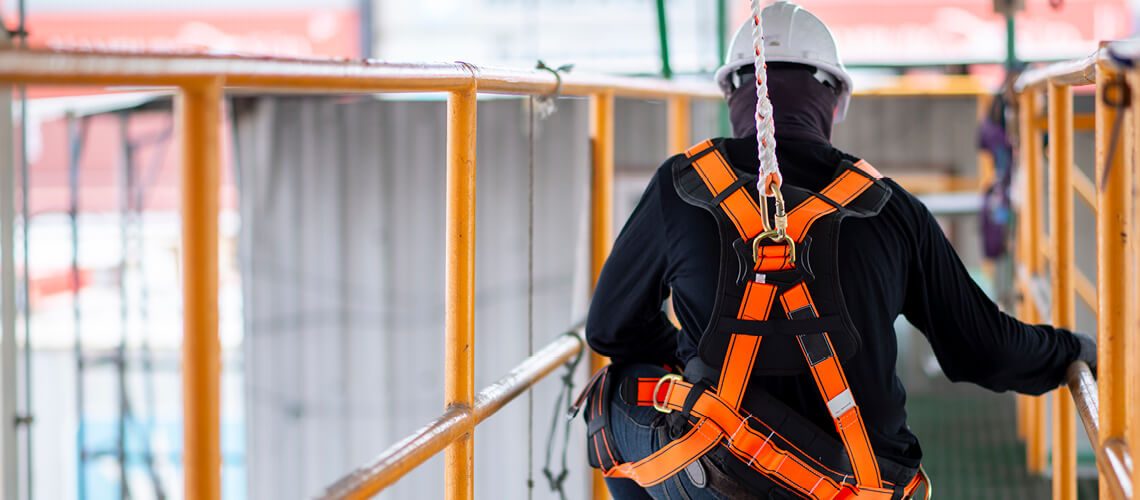At ACS Access we’re no strangers to working at height, therefore adhering to the Work at Height Regulations Act 2005 is of paramount importance to us.
What is the Working at Height Regulations Act 2005?
The purpose of the Work at Height Act 2005 is to reduce death and injury for those working at height. Working at height comes with risk and requires specialist equipment and planning in order to ensure workers safety as well as the wider publics.
The Work at Height Act 2005, enshrines work at height regulations in law and both employers as well as those who control work at height, must comply with the legislation by making sure the regulations are adhered to. In conjunction with this, employees are expected to be made aware of and understand elements of the protocols themselves.
Avoid, Prevent, Minimise
As part of the Work at Height Regulations Act – HSE have a ‘hierarchy of controls’ to be followed when working at height.
1. Avoid
Can work at height be avoided all together? HSE advise assessing whether you can circumvent working at height by using extendable tools or lowering objects to the ground so the work can be carried out without a height risk.
2. Prevent
If you’re unable to avoid working at height, the next step is to prevent a fall from occurring. It is possible to prevent a fall by working in areas that have already been established as “safe” – HSE explain that a non-fragile roof with permanent rails, would satisfy the criteria. In some circumstances it could be appropriate to use MEWPs (Mobile Elevating Work Platforms) to safely carry out work at height tasks in the workplace. Moreover, the use of safety equipment such as a harness, can also prevent those working at height from falling.
3. Minimise
If the risk that a person could fall remains you should minimise the distance and/or consequences of the fall by using collective protection and/or personal protection. Collective protection such as safety nets and soft-landing systems, can be installed in close proximity to where the work is being conducted. Personal protection could include a fall arrest system or industrial rope access.
Key Work at Height Regulations
- Risk assessments must be carried out for all work at height tasks, this can be done individually or collectively. Any risks identified must be managed by the relevant party to either eliminate or minimise them.
- It is vital all work at height duties be meticulously planned in advance, taking into account factors such as environmental conditions, occupational safety and the sourcing of equipment and materials as well emergency plans and procedures.
- The employer is responsible for ensuring work at height tasks are carried out by ‘competent employees.’ A competent employee is a person with knowledge and skills as well as the experience to safely conduct work at height. If an employee is being trained, you must ensure that they are supervised by a competent person throughout their training.
- Whether equipment is personal or collective, it must be supplied by the employer and the employer must ensure it is used correctly. Collective equipment which protects multiple people is to be prioritised over personal protective equipment. As an example – a guard rail is more important than a safety harness which can only be used by one person.
Working at Height FAQ’s
We’ve accumulated a variety of most frequently asked questions about working at height, check out the answers below.
Who is Responsible for Checking Your Work at Height Equipment Before it is Used?
The employer is responsible for checking any equipment prior to it being used, according to Regulation 12 of the Working at Heights Act 2005. As a result of this, if equipment isn’t tested and reviewed on a regular basis, the employer is liable.
Can I refuse to work at height?
If your employer asks you to work at height and you believe this would be unsafe, a person is protected by law to be able to challenge this request.
What is the Minimum Height Considered as Working at Height?
Work that takes place above ground level is considered “working at height”, therefore there is no specific height at which someone is considered to be “working at height”.
What is the Maximum Height You Can Work at Without Fall Protection?
Protective equipment is to be used if there is any risk of a person falling and injuring themselves or worse. Unlike the 1974 act, the 2005 act removed the ‘6ft rule’ and it is now considered that protective equipment is necessary if there is a risk of falling at any height.
How Our Fleet Can Fortify Your Safety Whilst Working at Height
ACS Access are dedicated to ensuring your work at height is hassle free and above all, safe. Our fleet of Mobile Elevating Platforms are regularly inspected to comply with current HSE guidelines.
Find out more about how our fleet can meet your requirements to work at height safely. Take a look at our fleet of truck mounted platforms for hire.

